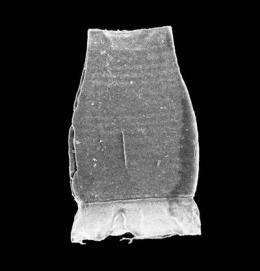An ancient Earth like ours

An international team of scientists including Mark Williams and Jan Zalasiewicz of the Geology Department of the University of Leicester, and led by Dr. Thijs Vandenbroucke, formerly of Leicester and now at the University of Lille 1 (France), has reconstructed the Earth's climate belts of the late Ordovician Period, between 460 and 445 million years ago.
The findings have been published online in the Proceedings of the National Academy of Sciences of the USA - and show that these ancient climate belts were surprisingly like those of the present.
The researchers state: "The world of the ancient past had been thought by scientists to differ from ours in many respects, including having carbon dioxide levels much higher - over twenty times as high - than those of the present. However, it is very hard to deduce carbon dioxide levels with any accuracy from such ancient rocks, and it was known that there was a paradox, for the late Ordovician was known to include a brief, intense glaciation - something difficult to envisage in a world with high levels of greenhouse gases. "
The team of scientists looked at the global distribution of common, but mysterious fossils called chitinozoans - probably the egg-cases of extinct planktonic animals - before and during this Ordovician glaciation. They found a pattern that revealed the position of ancient climate belts, including such features as the polar front, which separates cold polar waters from more temperate ones at lower latitudes. The position of these climate belts changed as the Earth entered the Ordovician glaciation - but in a pattern very similar to that which happened in oceans much more recently, as they adjusted to the glacial and interglacial phases of our current (and ongoing) Ice Age.
This 'modern-looking' pattern suggests that those ancient carbon dioxide levels could not have been as high as previously thought, but were more modest, at about five times current levels (they would have had to be somewhat higher than today's, because the sun in those far-off times shone less brightly).
"These ancient, but modern-looking oceans emphasise the stability of Earth's atmosphere and climate through deep time - and show the current man-made rise in greenhouse gas levels to be an even more striking phenomenon than was thought," the researchers conclude.
More information: Vandenbroucke, T.R.A., Armstrong, H.A., Williams, M., Paris, F., Zalasiewicz, J.A., Sabbe, K., Nolvak, J., Challands, T.J., Verniers, J. & Servais, T. 2010. Polar front shift and atmospheric CO2 during the glacial maximum of the Early Paleozoic Icehouse. PNAS doi:10.1073/pnas.1003220107.
Provided by University of Leicester















